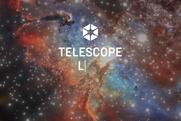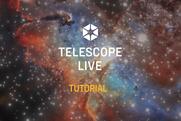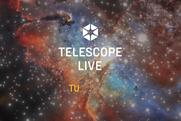[Premium]
APOD Winning Hybrid Processing With Pixinsight and Photoshop
2
2
Multi-award-winning astrophotographer Bernard Miller has created the perfect formula for a hybrid workflow using PixInsight and Photoshop. In this three-part tutorial, Bernard will show you how he processed two targets, Thor's Helmet and 47 Tucanae, both winning the coveted NASA's Astronomy Picture of the Day award.
Part 1 of this series will focus solely on PixInsight, detailing your approach to processing LRGB data within PixInsight along with the processes, scripts, and tools that Bernard used for post-processing an example of M51. This tutorial will begin with the stacked master frames.
Part 2 of this series will see Bernard look at the processing of his APOD-winning Thor's Helmet nebula. Following on from the master frames that Bernard processed using the techniques from the previous PixInsight video, he will show you how he takes this monochrome narrowband data and undertakes histogram manipulation, color adjustment, noise reduction, and adds finishing touches.
Part 3 of this series looks at the processing of the globular cluster 47 Tucanae. A complicated target for any astrophotographer to post-process, Bernard will show you all the techniques required to process a globular cluster using Photoshop. Along with the techniques that can be applied to LRGB datasets, Bernard will also show you how to properly post-process the stars within the cluster.
Part 1 of this series will focus solely on PixInsight, detailing your approach to processing LRGB data within PixInsight along with the processes, scripts, and tools that Bernard used for post-processing an example of M51. This tutorial will begin with the stacked master frames.
Part 2 of this series will see Bernard look at the processing of his APOD-winning Thor's Helmet nebula. Following on from the master frames that Bernard processed using the techniques from the previous PixInsight video, he will show you how he takes this monochrome narrowband data and undertakes histogram manipulation, color adjustment, noise reduction, and adds finishing touches.
Part 3 of this series looks at the processing of the globular cluster 47 Tucanae. A complicated target for any astrophotographer to post-process, Bernard will show you all the techniques required to process a globular cluster using Photoshop. Along with the techniques that can be applied to LRGB datasets, Bernard will also show you how to properly post-process the stars within the cluster.
SPECIFICATIONS

PART 1
M51 Processing
20 minutes

PART 2
Thor's Helmet Nebula Processing
41 minutes

PART 3
Globular cluster 47 Tucanae Processing
13 minutes
PART 1
M51 Processing
Comments
At 16:30 in the first video, you are talking about applying blurXterminator; however, you are actually applying noiseXterminator. Was this intentional?
Great one. Would also love to know what you are writing in the email when sending in the image. Anything specific or just the image and some basic info about the data?
Start your 1-week free trial
To watch this tutorial you need to sign up! Take advantage of our 1-week free trial and watch this tutorial now.

